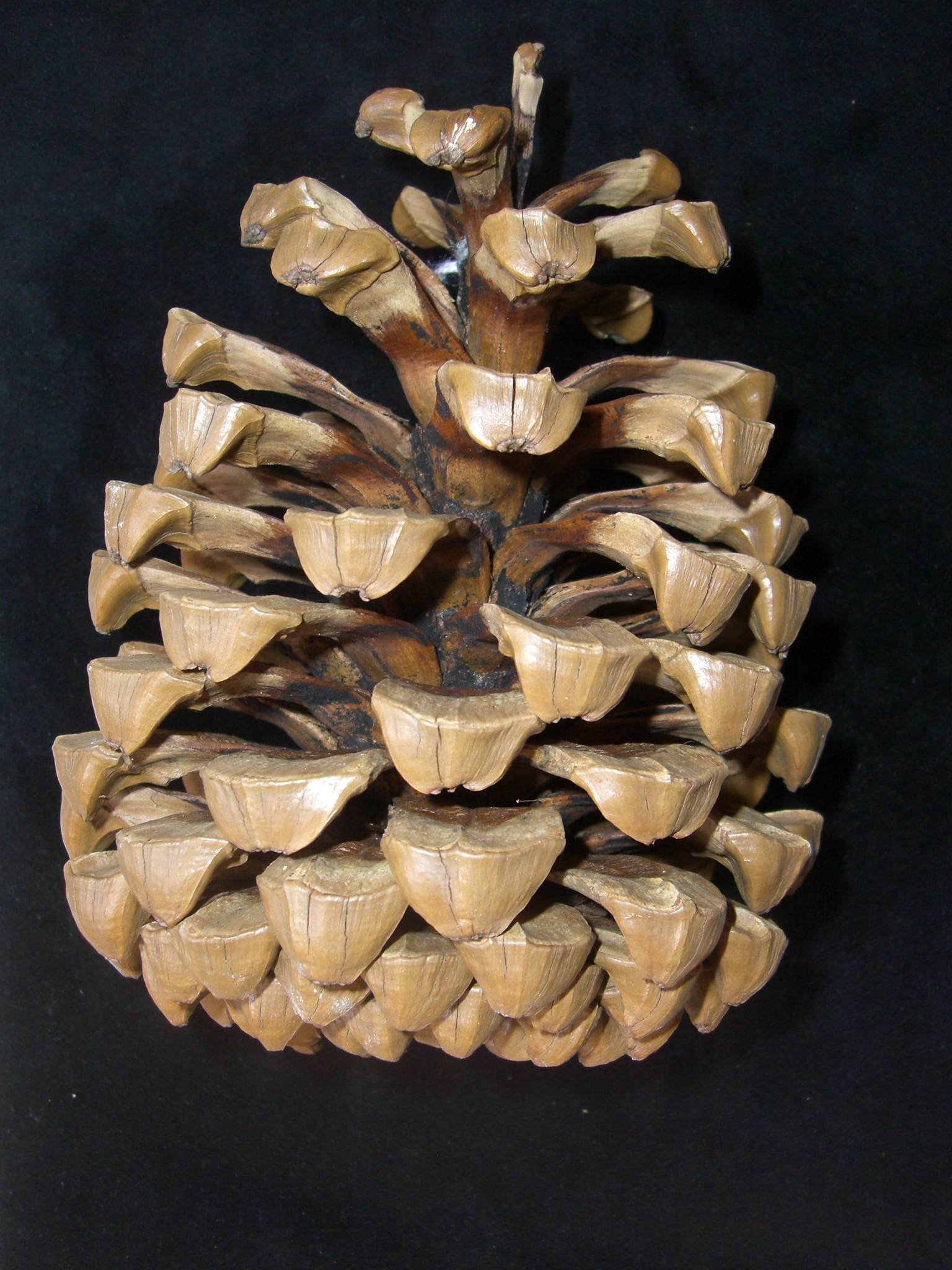
Large, broadly-crowned tree to 30 m or so tall. Bark grey and shed in strips, on old trees in large orange-red plates. Buds ovoid, non-resinous. Young shoots grey to light brown and dense with needle sheaths for several years. Leaves in 3's, mostly 20-30 cm long, densely clustered, slender, pendulous, tips with long, fine point; basal sheath persistent, 1-3 cm long. Male cones cylindrical, c. 2-3 cm long, Sept.-Oct. Female cones 9-20 cm long, 5-8 cm wide with scale tips thickened, extending downwards and tipped with a short beak.
Himalaya where it grows naturally in low Himalayan mountain ranges and valleys at altitudes of 500-2500 m in a wide range of soil conditions.
Very similar to P. canariensis but with the leaves generally longer and the tips of the cone scales extending downwards, also much rarer in cultivation.
NSW: Ournie (Jephcott Arboretum - massive trees above and below road, ptd c.1870's); Singleton (Burdekin Park, 29 m in 1975); Sydney (Royal Bot. Gds). ACT: Duntroon (Officers Mess); Westbourne Woods; Yarralumla (nsy at back of office). VIC: Carlton (Melbourne General Cemetery, central tree); Bendigo (Lake Weesoona; White Hills Cemetery); Fitzroy (Gds); Kew (next to cemetery in Doncaster Road; Willsmere Hospital); Melbourne (Domain, possibly the state's finest, NE of Shrine); Rutherglen (Public Park). TAS: Hobart (Queens Domain; Royal Tasmanian Bot. Gds).
Source: (1995). Pinaceae. In: . Horticultural Flora of South-eastern Australia. Volume 1, Ferns, conifers & their allies. The identification of garden and cultivated plants. University of New South Wales Press.
